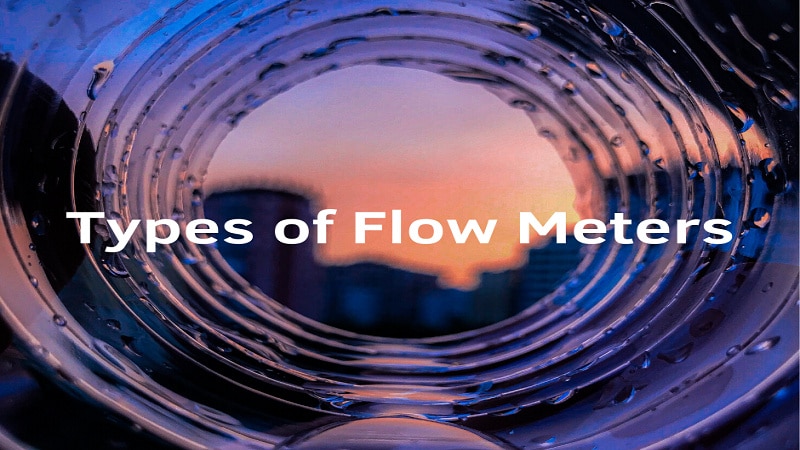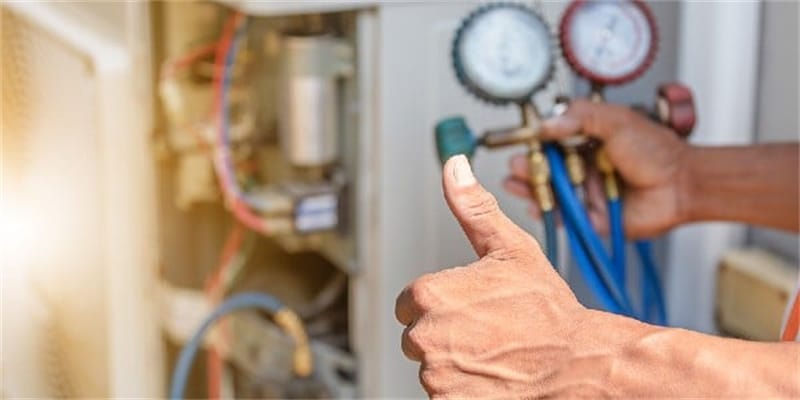
Flow meters are instrumental devices used in various industries to measure the flow rate of liquids or gases. They play a vital role in ensuring accurate measurements, which are crucial for operational efficiency and safety.
There's a diverse range of flow meters available, each tailored for specific types of measurements and conditions. Common types include Differential Pressure, Positive Displacement, Velocity, and Mass Flow Meters.
Understanding the different types of flow meters and their respective applications helps select the right meter for specific measurement tasks, ultimately enhancing the performance and reliability of fluid flow systems.
Types of Flow Meters
Differential Pressure Flow Meters:

Differential Pressure (DP) Flow Meters create a pressure drop across a restriction in the pipeline, where the flow rate is then determined by measuring the differential pressure across this restriction. Common applications include measuring the flow rate of liquids, gases, and steam in various industries like oil & gas, water treatment, and chemical processing.
Positive Displacement Flow Meters:
Positive Displacement (PD) Flow Meters measure flow by repeatedly filling and emptying compartments with the liquid or gas to be measured. They are highly accurate, making them suitable for precise measurements of flow rates in applications such as fuel dispensing, hydraulic testing, and chemical injection.
Velocity Flow Meters:
Velocity Flow Meters gauge flow rate by evaluating the velocity of the fluid or gas in the pipeline.
- Turbine: Turbine Flow Meters use a freely rotating turbine wheel to measure the velocity, common in water treatment, chemical, and petroleum industries.
- Electromagnetic: Electromagnetic Flow Meters operate by applying a magnetic field to the fluid flow path and measuring the resulting electromotive force. They are used in wastewater treatment, mining, and food & beverage industries.
- Ultrasonic: Ultrasonic Flow Meters use ultrasonic waves to measure velocity, often employed in oil & gas, water & wastewater, and food & beverage industries.
Mass Flow Meters:
Mass Flow Meters directly measure the mass flow rate of the fluid or gas.
- Coriolis: Coriolis Flow Meters function by inducing a vibrational force on the fluid stream, measuring the resulting phase shift to determine the mass flow rate. They are used in oil & gas, chemical processing, and food & beverage industries.
- Thermal: Thermal Mass Flow Meters operate by using the thermal properties of the fluid to gauge the mass flow rate, suitable for gas flow measurement in environmental monitoring, HVAC, and industrial gas processing.
Selecting the Right Flow Meter
Selecting an appropriate flow meter is crucial for achieving accurate flow measurements and ensuring the efficiency of the fluid system. Here are some key factors to consider:
- Nature of the Fluid: The fluid type (liquid or gas) and its properties, such as viscosity, conductivity, and corrosiveness, can significantly impact the flow meter choice. For instance, electromagnetic flow meters are suitable for conductive liquids, while thermal mass flow meters are ideal for gases.
- Pipe Size: The size of the pipe where the flow meter will be installed is important as it affects the flow meter's accuracy and range. Ensure the flow meter is compatible with the pipe size for reliable measurements.
- Flow Conditions: The flow conditions, including the flow rate, pressure, and temperature, should be considered. Different flow meters perform optimally under varying flow conditions. Hence, understanding the operational flow conditions helps select a suitable flow meter.
- Installation Conditions: The physical and environmental conditions where the flow meter will be installed also affect the selection process. Factors like available space, accessibility for maintenance, and environmental conditions such as temperature and humidity should be considered.
By considering these factors, one can make an informed decision in selecting a flow meter that will accurately meet the measurement needs while aligning with the system and environmental conditions.
Applications of Flow Meters
Flow meters are useful across various industrial applications, ensuring accurate flow measurement of liquids and gases, essential for operational efficiency and safety. Here's an overview of common industrial applications where different types of flow meters are utilized:
- Water & Wastewater Treatment: Monitoring and controlling the flow of water and other liquids is crucial in treatment plants to ensure effective processing and compliance with regulatory standards. Differential pressure and ultrasonic flow meters are often used in this sector.
- Oil & Gas Industry: Accurate measurement of the flow of crude oil, natural gas, and other fluids is vital in the oil & gas industry. Coriolis and positive displacement flow meters are commonly used for their high accuracy and reliability.
- Chemical Processing: Flow meters are essential in monitoring and controlling the flow of various chemicals and solutions, ensuring precise mixing, reaction rates, and safe handling. Magnetic and Coriolis flow meters are frequently used in chemical processing applications.
- Food & Beverage Industry: Ensuring accurate flow measurements of liquids such as milk, juices, and syrups is crucial for quality control and efficiency in production processes. Positive displacement and electromagnetic flow meters are often employed in the food & beverage industry.
- Pharmaceutical Manufacturing: Flow meters are key in measuring the flow of liquids and gases in pharmaceutical manufacturing processes, ensuring accurate dosing and adherence to formulation standards. Ultrasonic and Coriolis flow meters are common choices in this sector.
- Energy and Power Generation: In power plants, accurate flow measurement of water, steam, and other fluids is crucial for operational efficiency and safety. Turbine and thermal flow meters are often utilized in energy and power generation applications.
- HVAC Systems: Flow meters are used in heating, ventilation, and air conditioning systems to measure the flow of air and water, ensuring optimal system performance and energy efficiency. Velocity flow meters like vortex and turbine flow meters are commonly used in HVAC systems.
By understanding the specific needs and conditions of these applications, one can select the appropriate type of flow meter to ensure accurate and reliable flow measurements, contributing to the overall efficiency and safety of industrial processes.
Advancements in Flow Meter Technology
Flow meter technology has seen notable advancements, driven by the need for higher accuracy, real-time monitoring, and enhanced functionality in various industrial settings. Here are some recent improvements:
- Smart Flow Meters: The integration of smart technology has led to intelligent flow meters capable of real-time monitoring, diagnostics, and communication with centralized control systems. This facilitates better predictive maintenance and process optimization.
- Wireless Technology: Modern flow meters equipped with wireless technology enable remote monitoring and data transmission, reducing the need for manual data collection and enhancing operational efficiency.
- Enhanced Sensing Technologies: Advancements in sensing technologies have led to flow meters with better accuracy, wider measurement ranges, and the capability to handle a broader spectrum of fluids and gases.
- Improved Material Technologies: The use of robust materials has enhanced the durability and performance of flow meters in harsh industrial environments, extending their operational life and reducing maintenance requirements.
- These advancements not only enhance the functionality and applications of flow meters but also improve the efficiency, safety, and productivity of industrial operations.
Installation and Maintenance Tips

Proper installation and regular maintenance are essential for ensuring the optimal performance and longevity of flow meters. Here are some tips:
- Proper Installation: Ensure that the flow meter is installed where it can achieve accurate measurements, following the manufacturer's guidelines regarding orientation, straight pipe requirements, and other installation criteria.
- Regular Calibration: Calibrate the flow meter periodically to maintain its accuracy and reliability, adhering to the calibration schedule recommended by the manufacturer.
- Cleaning and Inspection: Regularly clean the flow meter and inspect it for any signs of wear, damage, or obstruction that could affect its performance.
- Software Updates: Keep the flow meter’s software updated to benefit from the latest improvements and features, whether it's a smart or digital flow meter.
- Seek Professional Assistance: If in doubt, seek professional assistance for installation, calibration, and maintenance to ensure the flow meter operates reliably and accurately over time.
Conclusion
This article has navigated the diverse world of flow meters, shedding light on their vital role in accurately measuring the flow of liquids and gases across various industrial sectors. We delved into the different types of flow meters, each with their unique working principles and application realms.
Furthermore, we explored the significant advancements in flow meter technology that have enhanced their functionality, enabling better real-time monitoring and remote control. The discussion on installation and maintenance has underscored the importance of proper setup and regular upkeep to ensure the reliable and accurate performance of flow meters.
Flow meters are indispensable tools in modern industrial setups, which are pivotal in ensuring operational efficiency, safety, and compliance with regulatory standards. Whether you want to measure the flow in a small-scale format or a large industrial system, there's a flow meter suited to your specific needs.
The market offers various flow meters, each designed to cater to different fluid properties, pipe sizes, and operational conditions. Therefore, we encourage you to explore the multiple types of flow meters available, considering the insights shared in this article, to make an informed decision that aligns with your individual or industrial requirements.
By understanding the nuances of different flow meters and adhering to the guidelines for installation and maintenance, you can significantly enhance the performance and longevity of your flow measurement systems, ultimately contributing to the overall efficiency and success of your operations.





